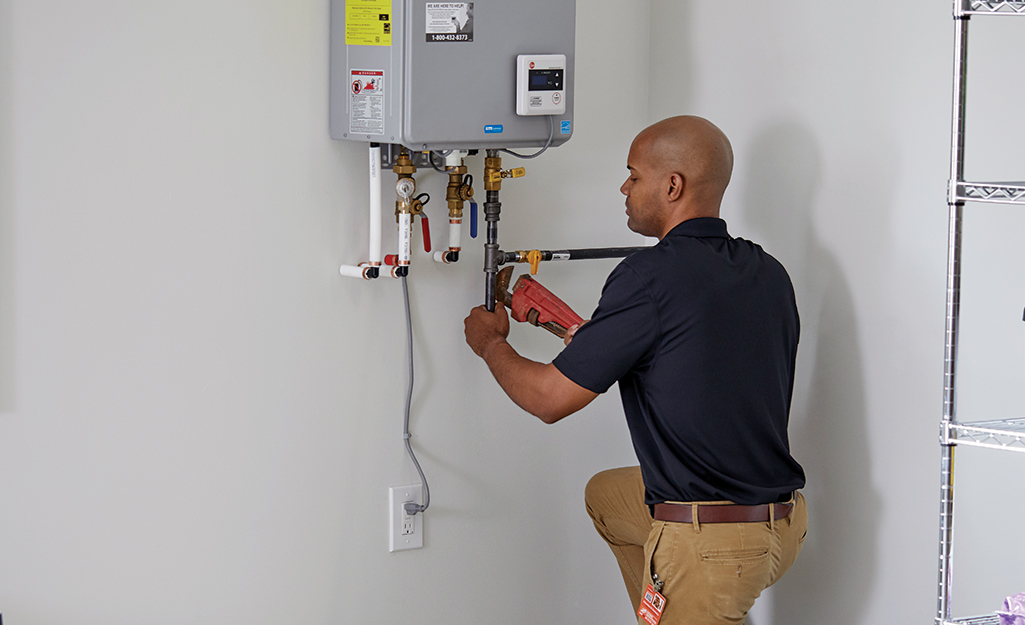Important Care Strategies for Your Home's Hot Water System
Important Care Strategies for Your Home's Hot Water System
Blog Article
We have found this post pertaining to How to Maintain a Hot Water Heater in a Few Simple Steps down the page on the net and reckoned it made good sense to talk about it with you here.

Warm water is vital for day-to-day convenience, whether it's for a rejuvenating shower or washing recipes. To guarantee your warm water system runs effectively and lasts longer, normal maintenance is key. This write-up supplies useful tips and understandings on just how to preserve your home's hot water system to prevent interruptions and pricey repair services.
Introduction
Keeping your home's hot water system may seem overwhelming, however with a few straightforward steps, you can ensure it runs smoothly for several years to find. This overview covers whatever from recognizing your hot water system to DIY upkeep tips and recognizing when to hire specialist help.
Relevance of Keeping Your Hot Water System
Routine upkeep not only expands the lifespan of your warm water system yet additionally ensures it operates successfully. Overlooking upkeep can lead to reduced efficiency, greater power bills, and also early failure of the system.
Indications Your Warm Water System Requirements Maintenance
Recognizing when your hot water system needs focus can prevent major concerns. Keep an eye out for signs such as inconsistent water temperature, weird noises from the heater, or rustic water.
Understanding Your Hot Water System
Prior to diving right into upkeep tasks, it's valuable to recognize the standard elements of your warm water system. Commonly, this includes the water heater itself, pipes, anode rods, and temperature level controls.
Month-to-month Maintenance Tasks
Regular regular monthly checks can assist capture small concerns prior to they intensify.
Purging the Hot Water Heater
Purging your hot water heater gets rid of debris buildup, improving efficiency and prolonging its life.
Checking and Changing Anode Rods
Anode poles prevent deterioration inside the container. Checking and replacing them when worn out is important.
Inspecting and Adjusting Temperature Level Setups
Readjusting the temperature level setups makes certain optimum efficiency and safety.
DIY Tips for Maintenance
You can carry out several maintenance tasks on your own to maintain your hot water system in top problem.
Looking for Leakages
Consistently evaluate pipelines and links for leakages, as these can bring about water damages and higher bills.
Evaluating Pressure Alleviation Valves
Testing the stress safety valve guarantees it works properly and avoids excessive stress buildup.
Shielding Pipelines
Protecting hot water pipelines lowers warm loss and can save energy.
When to Call a Professional
While do it yourself upkeep is helpful, some problems require specialist experience.
Complex Concerns Needing Professional Aid
Examples include significant leakages, electrical troubles, or if your hot water heater is regularly underperforming.
Regular Expert Maintenance Conveniences
Specialist maintenance can consist of complete evaluations, tune-ups, and ensuring conformity with safety criteria.
Verdict
Routine upkeep of your home's hot water system is essential for performance, longevity, and price savings. By following these ideas and knowing when to look for professional aid, you can guarantee a trusted supply of hot water without unexpected disturbances.
How to Maintain an Instant Hot Water Heater
Before tinkering with your hot water heater, make sure that it’s not powered on. You also have to turn off the main circuit breaker and shut off the main gas line to prevent accidents. Also turn off the water valves connected to your unit to prevent water from flowing into and out of the appliance. 2. When you’re done, you have to detach the purge valves’ caps. These look like the letter “T†and are situated on either side of the water valves. Doing so will release any pressure that has accumulated inside the valves while at the same time avoid hot water from shooting out and burning your skin. 3. When the purge valves’ caps are removed, you have to connect your hosing lines to the valves. Your unit should have come with three hoses but if it didn’t, you can purchase these things from any hardware or home repair shops. You can also get them from retail stores that sell water heating systems. Read the user’s manual and follow it to complete this task properly. When the hosing lines are connected, open the purge port’s valves. 4. You should never use harsh chemical cleaners or solutions when cleaning your unit. Make use of white vinegar instead. It should be undiluted and you’ll probably use about 2 gallons. 5. Now flush your water heater. This task should probably take about 40 minutes. We can’t give you specific directions for this because the procedure is carried out depending on the type, model and brand of your heater. With that being said, refer to the user’s manual. 6. When you’re done draining the unit, you have to turn off the purge port valves again. Remove the hosing lines that you earlier installed on each of the water valves. Put the valve caps (purge port) back in their respective places and be very careful so as not to damage the rubber discs that are found inside these caps. 7. Now that everything’s back in place, check your user’s manual again to find out how to reactivate your water heating system. 8. Once it is working, turn one of your hot water faucets on just to let air pass through the heater’s water supply pipes. Leave the tap on until water flows smoothly out of it. https://www.orrplumbing.com/blog/2014/september/how-to-maintain-an-instant-hot-water-heater/

As a reader on Water Heater Maintenance Tips You Can't Afford to Forget, I figured sharing that article was a great idea. Make sure you take the time to distribute this blog posting if you enjoyed it. Thank you for going through it.
Call Today Report this page